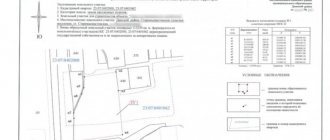Types of land categories
Each plot of land, regardless of who it belongs to, has its own designated category, in accordance with which it is exploited.
Currently, lands are divided into the following categories:
- industrial, land in this category is intended for the construction of transport routes, as well as buildings for various purposes, that is, these can be industrial facilities and others;
- ZNP or so-called lands of settlements, such plots are intended for the construction of residential facilities and cannot be owned by private individuals, as well as on the territory of lands for other purposes;
- Agricultural land or agricultural land intended for the cultivation of various products; this category includes areas for vegetable gardening and horticulture, as well as arable land, forest protection belts, reservoirs intended for fish farming and others of similar importance;
- plots that fall under the category of specially protected areas, these include territories that are withdrawn or not completely withdrawn from use and have a valuable purpose;
- water and forest fund lands;
- territories that belong to the reserve, as a rule, are those that belong to the state and have not yet been given for use to entities, organizations, or sold for personal use.
IMPORTANT !!! Such division into zones is necessary in order to protect land from illegal use. Thus, it turns out that in some areas it is possible to erect a multi-story building, in others it is possible to only grow various crops and erect buildings intended for storing equipment, and so on.
And in order to have the right to build a residential building on the land, a transfer from one category to another is required.
Transfer of agricultural land to another category
Agricultural plots can be transferred to the following categories of land:
- Land for industry;
- Lands of populated areas;
- Specially protected areas;
- Land reserves, water and forest funds.
Individuals and legal entities apply for the transfer of lands to the category of industrial plots or settlement lands in order to be able to build production workshops or residential buildings on such lands.
Agricultural plots adjacent to the boundaries of urban or rural settlements can be transferred to the land of settlements in order to obtain permission to build individual housing (for individuals) or for multi-storey development (for organizations).
Such a transfer is possible subject to the following conditions:
- The areas to be transferred are of no agricultural value;
- The requested category does not contradict the development plan for this territory for the coming years, adopted by local authorities;
- A positive conclusion from the environmental assessment was received.
Field agricultural plots can be transferred to industrial lands on the same grounds, if the initiator of the transfer has proven the feasibility of locating an enterprise on the specified plot.
It is important to take into account that it is impossible to change the category of agricultural lands whose cadastral value exceeds the regional average by more than one and a half times, or which are part of lands of special value (Clause 2 of Article 7 of Law No. 172).
Procedure
The transfer procedure can be carried out by owners, land users, including ordinary and legal entities, entrepreneurs or communities from among small indigenous settlements of the country, as well as in some cases municipal authorities.
A detailed description of the actions necessary for the process is described in Federal Law 172, paragraph 3:
- collection of documents;
- submitting an application with papers to the relevant authority;
- wait for a response;
- registration of the results obtained.
Of course, the actions taken will not always result in a positive result, since sometimes applicants are refused.
Package of necessary papers
The required package of papers is listed in Article 2 of Federal Law 172, so these include:
- statement;
- document confirming the identity of the person submitting the documents;
- An extract certifying registration may be required; this is necessary if the applicant is an individual entrepreneur or legal entity;
- an extract from the Unified State Register of Real Estate (USRN), if there is no information on paper, employees will independently request the necessary information from the executive authorities;
- Documentary confirmation of rights to the land plot or consent from the owner will be required if all actions are carried out on the basis of use rights;
- For some categories, it may be necessary to provide an environmental assessment report.
You will also need to provide the basis for the transfer, supported by arguments and information about the existing category and the one to which you need to re-register.
In what cases is a category change allowed?
Changing the category and type of permitted use is not allowed in all cases, and the owner of a real estate cannot do this only on the basis of his own desire.
Cases when this can be done:
- Conservation of land for state or regional needs.
- Creation of cultural monuments and specially protected areas.
- Formation of a settlement.
- Placement of objects of public importance on this site.
- Road construction.
- Execution of international contracts and obligations.
- Recognition of agricultural land with subsequent permission to build industrial plants.
- Inclusion of a site in the water or forest fund in case of recognition of the site as unsuitable for agricultural activities.
It will be possible to change the category and type of permitted use of a land plot after approval of the general plan by the authorized body. In this case, a certain procedure must be followed in order to achieve a solution to the task.
Making an application
To transfer land from one status to another, applicants should contact such organizations as:
- to the state authorities of the region, if the site belongs to water or forest areas, as well as to the category of agricultural land;
- to the administration of the locality in which it is located if the owner is a municipal body or a private person;
- if the owner is the state, then in this situation you will have to turn to the government of the country.
The application itself is drawn up in free form or on a special form; a sample for filling out or writing can always be found on the Internet.
Why is it necessary to change the category of plots?
Any allotment is subject to mandatory category determination, and the owner is obliged to operate it only in accordance with its purpose.
Today there are several categories of plots, among which there are lands:
- which belong to the stock;
- agricultural purposes;
- settlements;
- special purpose;
- forest and water funds;
- under a special regime of protection.
It is precisely this delimitation of zones that is required for maximum protection of plots from illegal exploitation.
It is important to understand that on the territory of some plots it is possible to erect high-rise buildings, while on the territory of others only agricultural activities are allowed, where the most important building can be a shed or barn.
What then should the owner do if it is necessary to carry out certain works on his plot that are not on the list of permitted types of exploitation directly for his plot of land? To do this, it is possible to change the allotment category to the desired one.
Registration of category change
A photocopy of the decision made is sent to the authorized body of the Federal State Registration Service, to the cadastre and cartography department within ten days from the date of the result. In accordance with Federal Law 172, Article 5, changes are made to the Unified State Register of Real Estate.
It should also be remembered that notification for the service provided, in this case the change in the status of the land, is provided free of charge. But the service of making changes to the Unified State Register in accordance with Article 333.33 of the Tax Code of the Russian Federation will require payment of a fee of 350 rubles. As soon as the changes are made by the user, the owner will be able to use the land in accordance with the assigned status.
Procedure for consideration of the issue
To prepare materials on the transfer of land from one category to another, a commission is assembled at the federal, regional or local government level. It includes officials from the geodetic and land management services, environmental protection, natural resources, the Ministry of Emergency Situations, forestry, sanitary supervision, as well as representatives of the executive branch of the level at which the application is being considered.
Within 10 working days, the commission conducts an inspection of the territory applied for transfer , after which it draws up an inspection report, which is sent to the executive authorities. This act indicates the cadastral number of the site, the correspondence of the boundaries of this territory with the data specified in the cadastre, as well as compliance (non-compliance) with the rules for use of the territory by the owner.
Based on the act presented by the commission, the executive body makes a decision to transfer the site to another category or refuses to carry out the transfer (indicating the reason).
IMPORTANT! The refusal can be appealed to a higher authority or court.
Refusal to make changes to land categories
The results are not always positive; sometimes applicants are refused due to the following reasons:
- incorrect execution of documentation, as a rule, in this case, is refused at the stage of submitting papers to the executive bodies, therefore, in order for everything to be accepted, it will be necessary to eliminate the existing shortcomings;
- the presence of restrictions or prohibitions on the ability to transfer land from one category to another, established in accordance with legislative acts;
- the category into which they want to transfer the plot completely contradicts its intended purpose;
- the presence of a refusal from the expert commission on ecology;
- The next reason that may serve as a refusal for the procedure is the high cadastral price of the transferred territory.
ATTENTION !!! After the refusal is issued, the entire package of submitted documents is returned to the applicant, this happens within 30 days from the date of submission, and a notice with the reason for the refusal is also attached to the documentation.
If this happens, do not be upset, because, on the basis of the law, the decision made can be appealed in court.
To do this you will need:
- draw up a statement of claim;
- attach a copy of the decision made;
- photocopies of all previously submitted documents;
- receipt for payment of state duty;
- all papers in accordance with which there is a basis for carrying out this procedure.
If a positive court decision is made, attach it to all the necessary papers and resubmit the petition.
Every owner of a plot may face the need to transfer a land plot from one category to another. It should be remembered that the procedure itself is not complicated, but despite this, owners often refuse their request, so before submitting papers you should prepare not only all the documentation, but also support them with the basis for its implementation.
Collection and submission of documents
The interested party to change the status of the site must attach the following documentation to the application:
- Passport of a citizen of the Russian Federation (copy);
- Papers confirming the right to land;
- Extract from the state real estate cadastre;
- Extract from the Unified State Register of Real Estate;
- Consent of the copyright holder to transfer from one category to another.
ATTENTION! A state environmental assessment report may be required. You will be informed about this when contacting the executive committee.
Based on the results of consideration of the application, one of two decisions is made:
- Allow the land to be transferred to the status specified by the applicant;
- Refuse the application and keep the previous category.
The text of the act indicates the reasons for the decision made, the characteristics of the land and its intended use.










